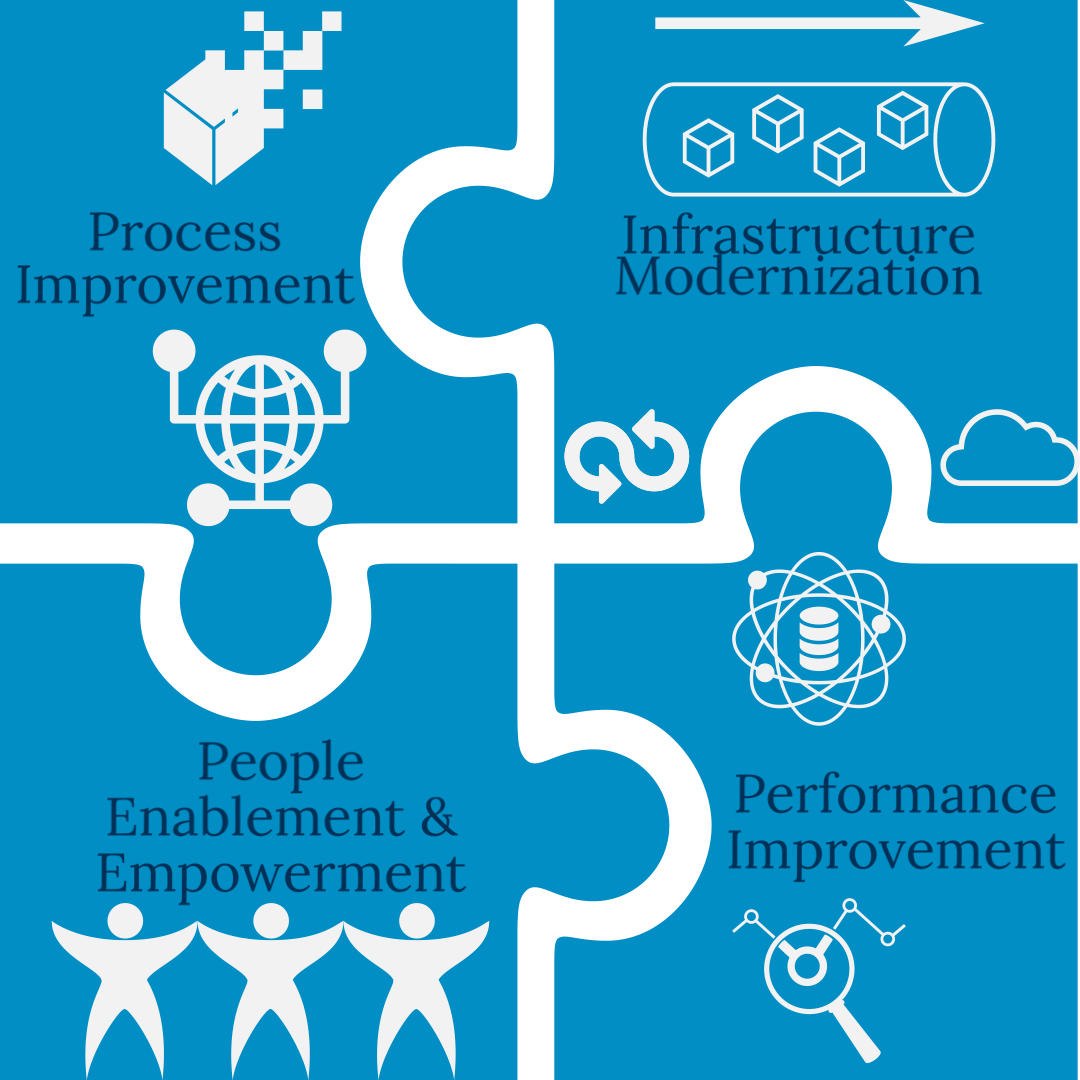Understand the key factors to move towards business excellence driven by an agile approach.
People, Technology and Processes are the key areas of your organization to leverage and reach operational excellence.

1. Keep up with trends
It’s not enough to be reactive, you must be pro-active. Better decisions are based on real-time data. For example, you can improve the visibility demand and accuracy with a forecast model and smart analytics. In a dynamic market, you have to be timely in aligning your strategy, your plan and priorities with customer needs.
2. Learning Cycles
Accept that nothing is perfect right away. The technique of small steps, implying reflection and continuous decision making, ensures to move toward the right direction, allowing experimentation while managing and minimizing risks. Iterations accelerate the working model, following the principle of delivering as fast as possible and delivering value continuously. Activate feedback in a safe environment, where information is transparent and accessible for all. At each iteration you have a chance to learn from both successes and failures.
3. People in the center of a dynamic model
Silos thinking is outdated, as it has proven counterproductive. Business groups need to get connected in order to best profit form one another and to reduce the risks of bottleneck. In an agile approach, cross-functional teams gather the knowledge and skills they need from different expertise and levels of the organization to deliver the product / project, they are mandated to. Self-organized or self-managed, they define their way of working, the way they think best to reach their goals. Empowered teams feel accountable for the end-to-end performance. Such teams are open for discussion and, while not seeking full consensus, are used to listen and give more weight to the team members with the deepest expertise on the topic. It’s fine to disagree if at the end you are ready to commit to the collective decision.
4. Measure performance - transparently on what really matters
Measuring performance should follow a strategy. First identify goals, keeping a focus on the customer and on the most critical items. Then articulate them into meaningful and ambitious KPIs. Measure only what you need, like customer retention, employee engagement or user satisfaction, but remember to integrate quality metrics, e.g. defects (escaped, deferred) or automated test coverage, including tolerance boundaries controls. Study patterns and use those to make insightful decisions, guiding continuous improvement. Effectiveness should go hand in hand with efficiency: doing the right things in the right way.
5. Time to reflect
This comes for free within an agile framework for example like scrum, where meeting events such as the review or the retrospective are part of each iteration. While the first one brings your product closer to the customer needs and stakeholders expectations, the other helps the team to think and to improve processes and interactions. Independently of you choice of framework, make sure you get your chance to collect feedback and act upon it.
5. Modern infrastructure and automation
Technologies continuously evolve, which makes staying up-to-date a real but necessary challenge. Make sure that the IT solutions are aligned with the overall strategy. Integrate automation practices within your DevOps activities to speed up time to delivery, while improving quality at the same time. Digitalize your operational processes and streamline your IT workflows, for example optimizing infrastructure resources with cloud services.


